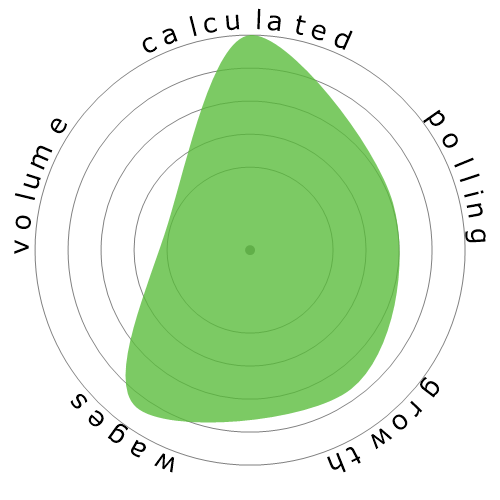Nurse Anesthetists




People also viewed
Calculated automation risk
Minimal Risk (0-20%): Occupations in this category have a low probability of being automated, as they typically demand complex problem-solving, creativity, strong interpersonal skills, and a high degree of manual dexterity. These jobs often involve intricate hand movements and precise coordination, making it difficult for machines to replicate the required tasks.
More information on what this score is, and how it is calculated is available here.
User poll
Our visitors have voted there's a low chance this occupation will be automated. This assessment is further supported by the calculated automation risk level, which estimates 0.0% chance of automation.
What do you think the risk of automation is?
What is the likelihood that Nurse Anesthetists will be replaced by robots or artificial intelligence within the next 20 years?
Sentiment
The following graph is included wherever there is a substantial amount of votes to render meaningful data. These visual representations display user poll results over time, providing a significant indication of sentiment trends.
Sentiment over time (yearly)
Growth
The number of 'Nurse Anesthetists' job openings is expected to rise 10.4% by 2033
Total employment, and estimated job openings
Updated projections are due 09-2025.
Wages
In 2023, the median annual wage for 'Nurse Anesthetists' was $212,650, or $102 per hour
'Nurse Anesthetists' were paid 342.5% higher than the national median wage, which stood at $48,060
Wages over time
Volume
As of 2023 there were 47,810 people employed as 'Nurse Anesthetists' within the United States.
This represents around < 0.001% of the employed workforce across the country
Put another way, around 1 in 3 thousand people are employed as 'Nurse Anesthetists'.
Job description
Administer anesthesia, monitor patient's vital signs, and oversee patient recovery from anesthesia. May assist anesthesiologists, surgeons, other physicians, or dentists. Must be registered nurses who have specialized graduate education.
SOC Code: 29-1151.00


Comments
Step 1: Develop the AI. The data inputs are already there - AI can already read a patient's charts, monitor their vitals, and transcribe feedback/instruction from the surgeon. If an AI can be developed that takes that information and selects which drugs to administer, that removes nearly all the brainpower and expertise needed from a CRNA.
Step 2: Train someone to intubate and the other physical labor parts of the job. Pay them 1/3 of what you pay a CRNA.
Step 3: An Anesthesiologist monitors multiple rooms simultaneously (like they already do with CRNAs) as a failsafe against errors by the AI and is present during critical periods like induction and emergence, intervening if there's an emergency.
Leave a reply about this occupation